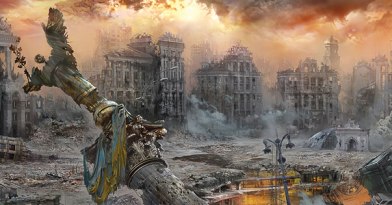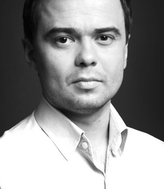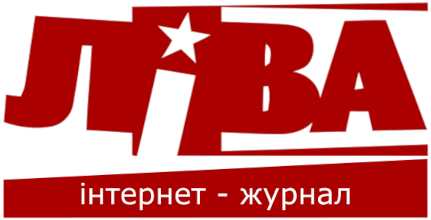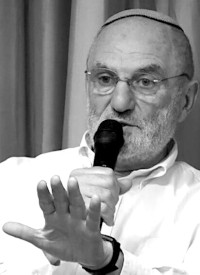
Ukraine has been on the verge of an economic collapse for a long time now. Still, the worsening economic crisis of the last number of days points to a convulsive, system-wide, failure of the country’s financial system. The dismally low value of the national currency, which crossed the 14 UAH to the dollar mark, has failed to provide a stimulus for national exports. Instead, the falling value of the currency has been accompanied by a decline in production and rising prices – the classic indicators of stagflation (the combination of economic stagnation and rising unemployment and inflation). In other words, rising unemployment is not eliciting a decline in prices, while inflation is not stimulating a growth in production, which should be more competitive in view of the depreciation of the national currency.
The main victim of inflation is the general public, whose real earnings are declining precipitously. In the past, the Ukrainian economic czars would have resorted to so-called monetary interventions, flooding the currency market at the expense of state reserves. Now, however, the National Bank has been forbidden by the IMF from reducing its gold and foreign currency reserves, which must be maintained at current levels as a condition for obtaining further IMF credits.
Meanwhile, the most high-tech branches of industrial production are languishing. Production at the Zaporozhye automotive plant (ZAZ) is being curtailed, while Motor-Sich, which builds aircraft engines, has announced the relocation of its production to Russia. The Kremenchug car assembly plant (manufacturer of Geely and SsangYong vehicles), which assembled some 10,000 vehicles in 2013 – an increase of around 2.8 times over the previous year, has announced its closure and the transfer of production to Kazakhstan. One of Ukraine’s largest ship manufacturers, the Kherson Shipyard, has entered bankruptcy proceedings. A halt or reduction in production naturally awaits those high-tech industries (the production of turbines, for example) which are geared towards the markets of the Eurasian Customs Union.
The hypothetical benefits from signing onto EU free trade zone will not only be unable to compensate for the economic losses, but will usher in even more troubles for previously growing industries. Ukrainian agricultural producers, for example, who have exhibited dynamic growth in recent years, will have to compete against EU producers who receive enormous subsidies from their governments. Moreover, producers of goods with high added value (for example, ready-to-cook meats) will encounter suspicion on the part of consumers in European markets. As with Ukrainian consumers, European shoppers prefer buying local products when going to the supermarket.
Armed conflict has also exacerbated the situation in the energy sector. Since gas from Russia will only be available in low quantities or not at all, the country will require an increase in coal production. The last Sunday in August, when Ukraine traditionally celebrates Miners’ Day, was one of the saddest days in the industry’s entire existence. The mines, which have been shelled, destroyed, or simply closed, are incapable of meeting the fuel demands of the country’s energy sector.
In recent years, many patriots have come to the opinion that the Donbass mines are unprofitable. Many even began suggesting that a bloody military conflict in the East would be a good way to rid the country of this outdated “Soviet” industry, tossing coal in “the dustbin of history”. However, the impending economic crisis of the upcoming winter threatens the infrastructure of the majority of Ukrainian cities. Some 42% of Ukrainian electricity is derived from thermal power plants using coal. Deprived of fuel, the thermal power plants will not only be unable to produce heat, but also electricity, while the growing number of hot-water heaters and independent heating systems will not only be unable to resolve the problem of heating and hot water, but will significantly worsen the crisis, imposing an excessive burden on the energy grid.
While Prime-Minister Arseniy Yatseniuk has stated Ukraine needs to acquire 5 bn cubic meters of Russian gas, the former Minister for Fuel and Energy, Ivan Plechkov, believes the government is issuing false information, underestimating the size of the gas shortage. According to Plechkov, Ukraine now requires between 10 and 15 bn cubic meters of gas.
The European governments and the major gas companies, connected with Gazprom through formal and informal agreements, are in no hurry to rescue Ukraine, while the idea of reverse gas supplies from Slovakia is hardly a practical solution.
In the near future we may see the collapse of the modern urban infrastructure in Ukraine. It is symbolic, that the so-called “revolution of dignity”, proclaimed as a war against the Soviet totalitarian past, having declared that those who disagree with it are “superfluous” in this “celebration of life”, is, at the same, time forced to do battle against the most fundamental elements of the economy and infrastructure – all in the name of European integration. The “European choice” in the economic field is a rejection of industrial manufacturing and “unprofitable” mines, and of those elements of the population who are engaged in these industries and those regions where this production takes place.
The experience of Bulgaria, Romania and the Baltic states has shown how European capitalist integration ends: rapid de-industrialization, reduction of energy facilities, and a complete re-orientation towards imports. For these countries, however, the onerous social consequences of such policies found partial compensation in the possibility of free movement of the labour force. The economically active and educated part of the population departed for the main European economies (Germany, Great Britain) and occupied the lowest paying positions in the job market. For example, a quarter of the Latvian population has already left the country in search of work.
The Ukrainian economy, however, has no such compensatory opportunities, – on the one hand, because of the lack of prospects in removing visa requirements in the near future, and, on the other hand, due to the reduction in the number of jobs in Europe. Meanwhile, migrant labourers from the newest entries into the EU are creating downward pressure on the low-wage market. In other words, the most undervalued jobs in the EU have already been occupied and the expansion of the job market required to make room for the citizens of a stagnating Ukraine is not foreseen.
In the meantime, the Kiev government has declared economic war on the Donbass. Ukrainian citizens residing in the DPR and LPR (Donetsk and Lugansk Peoples’ Republics) have ceased receiving social benefits. The governments of the republics have already issued statements that they will ensure the continuity of payments in the region. Naturally, no one is surprised by the fact that the Ukrainian government has little interest in the life of average citizens, however, it continues to show unwelcome concern for business. Despite the presence of military operations, death and destruction, the fiscal authorities continue to impose penalties upon Donbass enterprises for unpaid taxes, while creditors are increasing the pressure on debtors for overdue payments.
In the political sphere, the Kiev government is trying to establish a populist right-wing dictatorship. And if the government is employing the tactics of direct police violence, destruction of offices, arrests and intimidation against the left, its relationship with the far right is much more complex. Not only do the latter have significant support among the public, they are also well-armed and organized. They are exerting political pressure on the President, which has made him visibly nervous. By all accounts, Poroshenko’s tactics in relation to the far right comes down to their mass dispatch to the front (hoping for their physical destruction) with the concomitant rapid occupation of the right flank with loyal political clowns, such as Lyashko (Sergei Levochkin’s protege).
The right, meanwhile, is well-informed of the President’s plans and is preparing for a military-political takeover in turn. It would appear Ukraine’s current right-wing government has the potential to move even further to the right.
The military situation gets worse for the government with each passing day. The DPR offensive towards Mariupol and the major defeat near Ilovaisk have forced President Poroshenko to declare there has been a full-scale Russian military invasion. At the same time, the Ukrainian military and political leadership has refrained from declaring war and martial law, fearing the consequences of such a step. After all, a declaration of martial law would not only make it impossible to hold parliamentary elections, it would also make it impossible to receive the foreign military assistance which Kiev is relying upon.
The government is placing its greatest hopes on the patriotic hysteria which has swept the capital and many regions of the country. Under the present circumstances, any form of protest will be declared as the doings of the enemy and harshly suppressed. However, there are regions which regard the Kiev government with more than a little skepticism. Kharkov and Odessa, which are still under the control of government forces, do not share these “patriotic sentiments”, and could become a major springboard for political resistance to the government. These “fault lines” – regions where loyalty to the government is minimal – could become a second front under conditions of a worsening crisis, since the residents of Odessa, Kharkov and many other towns are not prepared freeze and starve for the sake of war against the Donbass and Russia, with whom they sympathize.
The confinement and pre-trial detention of hundreds of political prisoners arrested on formal, trumped-up charges poses another problem for the regime. The continued detention of these persons is eliciting ever greater attention in the West and the issue of Kiev’s political prisoners is expected to be raised at the Parliamentary Assembly of the Council of Europe and in the the parliaments of European countries – the same ones providing support for the war and the repression of Ukrainian human rights activists.
In general, it should be noted that the government’s tactics will consist in trying to “tighten the screws” in domestic policy while attempting to “internationalize” the conflict, i. e., drag NATO into it. What the government intends to do in the economic sphere remains unclear, as the current cabinet has no clear strategy for stabilizing the economy. The only available resources are IMF funds, which, however, cannot resolve the problem of an impending default. If the state goes bankrupt, its strategy in the political and economic spheres will suffer a complete reversal. This will require new, more coherent and sensible tactics on the part of the entire opposition front and it is here that the intellectual forces of the resistance should be focused.
Sergei Kirichuk
Translated by Ivan Skoblin
Source: Liva oroginally published on 01.09.2014
-
Історія
Африка и немцы - история колонизации Намибии
Илья Деревянко история колонизации Намибии>> -
Економіка
Уолл-стрит рассчитывает на прибыли от войны
Илай Клифтон Спрос растет>> -
Антифашизм
Комплекс Бандеры. Фашисты: история, функции, сети
Junge Welt Против ревизионизма>> -
Історія
«Красная скала». Камни истории и флаги войны
Андрій Манчук Создатели конфликта>>













 RSS
RSS





